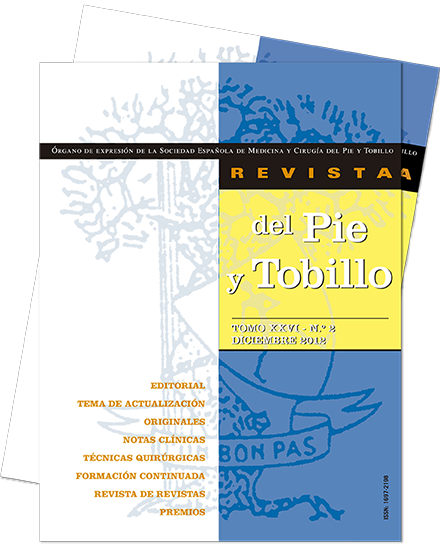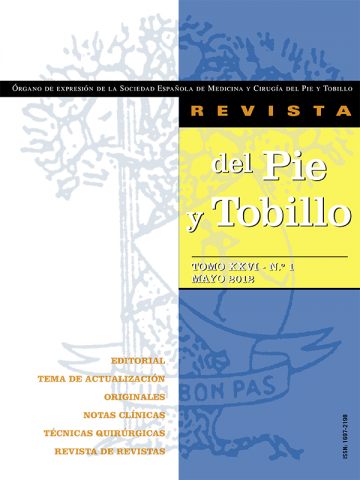Resumen:
El objetivo de nuestro trabajo fue comparar los resultados de la cirugía percutánea según la técnica de las 5 incisiones (sutura percutánea [SP] modificada de MA y Griffith) y la cirugía abierta en la rotura del tendón de Aquiles en pacientes intervenidos de 2005 a 2007 en el Hospital Universitario 12 de Octubre (Ma-drid). Para ello se realizó un estudio retrospectivo de 50 casos, 25 SP y 25 suturas abiertas (SA) con un seguimiento mínimo de un año y un seguimiento medio de 27 meses.
La evaluación clínica se realizó según la escala funcional de Boyden y Kitaoka: en el grupo de SP, 23 pacientes (92%) con satisfacción personal excelente y 2 pacientes (8%) con buena; En el grupo de SA, 22 pacientes (88%) tuvieron satisfacción personal excelente, 2 pacientes (8%) satisfacción buena, y 1 paciente (4%) grado de satisfacción malo, sin existir dife-rencias significativas entre ambos grupos. Ningún paciente presentó restricciones en la actividad diaria ni en el calzado. Todos finalizaron con una movilidad activa completa o con limitación de los últimos grados del tobillo afecto. Las com-plicaciones presentadas fueron disestesias en el territorio del nervio sural, infección superficial, infección profunda, rerrotura fibrilar parcial, adherencias, etc.
Abstract:
The aim of our study was to compare the results of a group under-going percutaneous surgery following the “five-incision” technique with a second group undergoing open surgery for Achilles tendon rupture during the period between 2005 through 2007 at the University Hospital 12 de Octubre (Madrid). A retrospective study of 50 cases was conducted, with 25 patients in the group of per-cutaneous suture (PS) and the remaining 25 cases belonging to the group of the open surgery (OS), with a minimum follow-up of one year and a mean follow-up of 27 months.
The clinical assessment was performed using the Boyden and Kitaoka Scale. In the PS group, 23 patients (92%) had excel-lent personal satisfaction and 2 patients (8%) had a good result, while in the OS group 22 patients (88%) scored excellent in the personal satisfaction question, 2 patients (8%) scored good and 1 (4%) was unsatisfied without statistically significant differences between both groups. There wasn’t any patient with limitation for daily activities or shoe wear. All of them ended up with a full ac-tive mobility or with a restriction in the last degrees of the normal range of movement. The following complications were found: neu-ropathic pain in the sural nerve territory, superficial wound infec-tion, deep infection, partial re-rupture, adhesions, etc.





